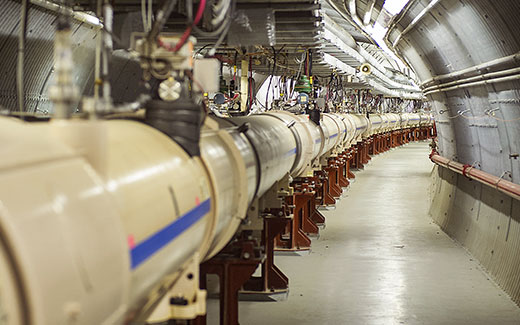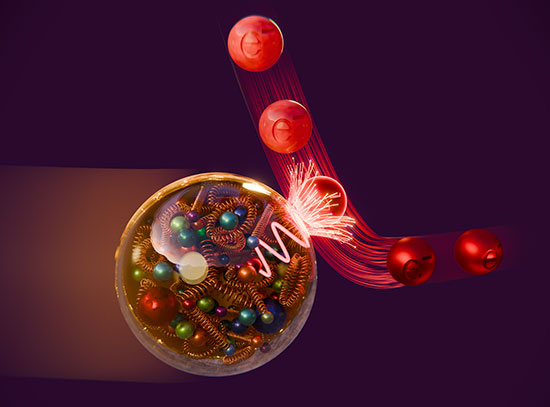
Nuclear Physics
Exploring matter at the dawn of time
Brookhaven Lab is a world leader in investigating the building blocks of matter. Home to the Relativistic Heavy Ion Collider and the future Electron-Ion Collider, Brookhaven’s nuclear physics program explores the early universe and how fundamental forces and particles give shape to all of today’s visible matter—everything from stars to planets to people.
Brookhaven Lab is building the world’s first polarized electron-proton/ion collider, known as the Electron-Ion Collider (EIC). This discovery machine will unlock the secrets of the “glue” that binds the building blocks of visible matter. By colliding electrons with protons and nuclei, the EIC will produce snapshots of those particles’ internal structure—like a CT scanner for atoms. Beyond sparking scientific discoveries in a new frontier of nuclear physics, the EIC will trigger technological breakthroughs with broad-ranging impact, from human health to national security.
Researchers from around the world use Brookhaven’s Relativistic Heavy Ion Collider (RHIC) to study what the universe may have looked like in the first few moments after its creation. By colliding two beams of gold ions at nearly the speed of light, RHIC "melts" protons and neutrons, liberating their constituent quarks and gluons. Researchers use the house-sized STAR detector at RHIC to track the thousands of particles created by each collision. In the final years of RHIC’s operation, before its infrastructure is repurposed for the EIC, a new detector, called sPHENIX, will increase the data yield of RHIC’s collisions tenfold.
Nuclear Theory
Theorists at Brookhaven Lab conduct research that helps drive and interpret the nuclear physics experiments at RHIC and beyond. Their work focuses on refining the theory that describes the building blocks of matter and the strong nuclear force, the astrophysical origin of elements, and the properties of fundamental particles.
RIKEN BNL Research Center
Since 1997, Brookhaven and RIKEN, Japan's Institute of Physical and Chemical Research, have collaborated to form the RIKEN BNL Research Center (RBRC) at Brookhaven Lab. Scientists at RBRC combine theoretical and experimental nuclear physics research to investigate how matter was formed after the Big Bang.










